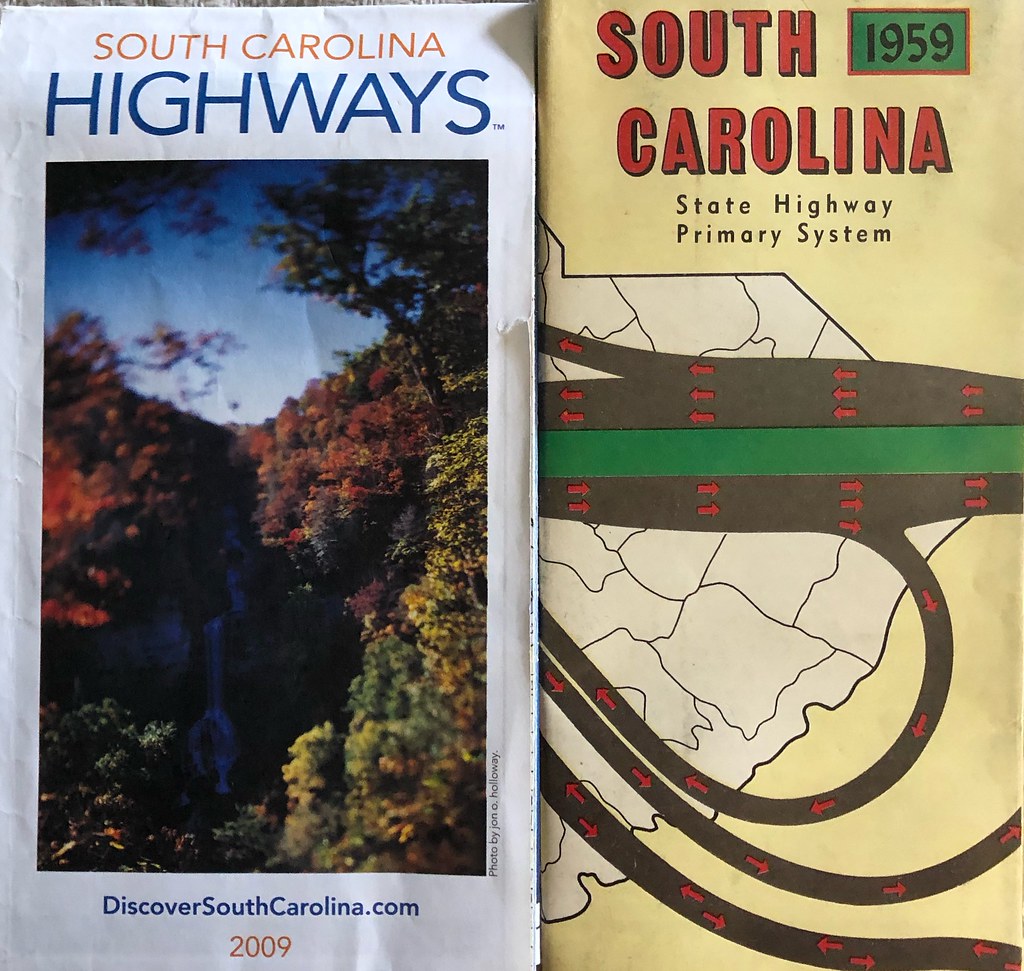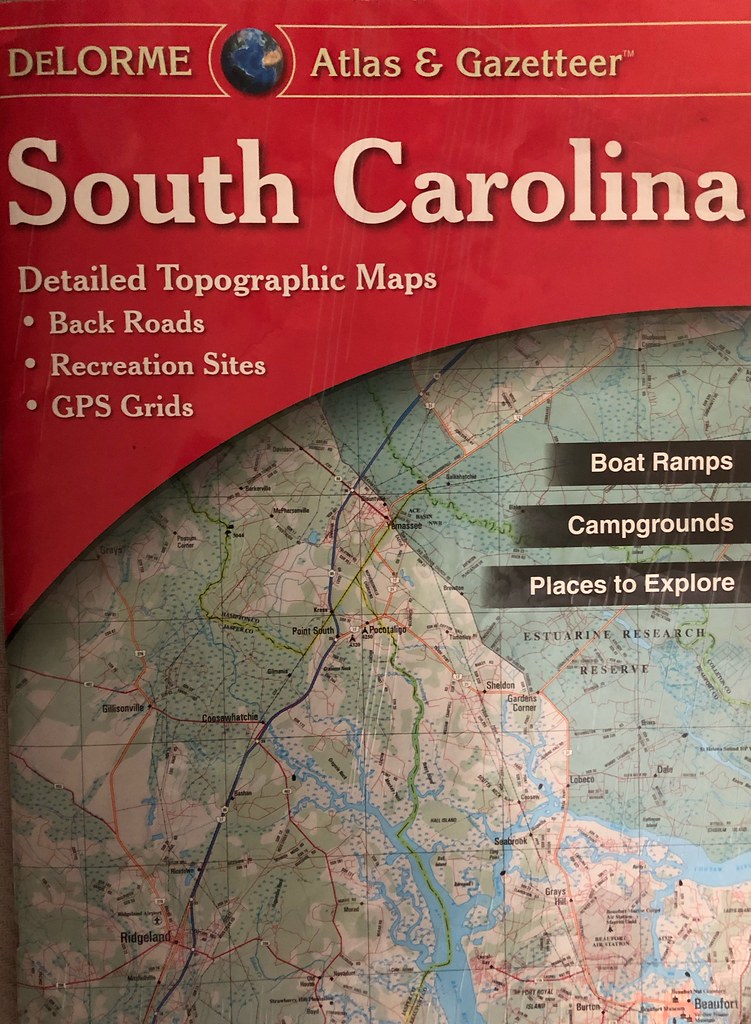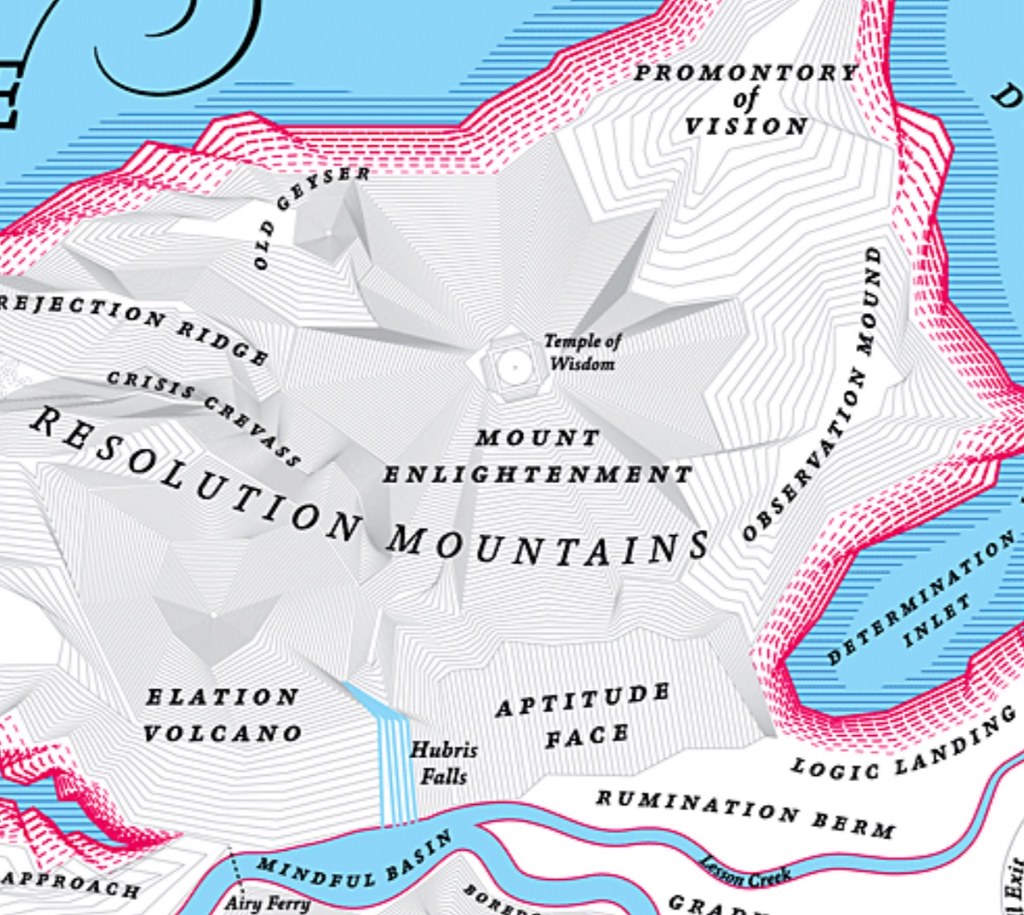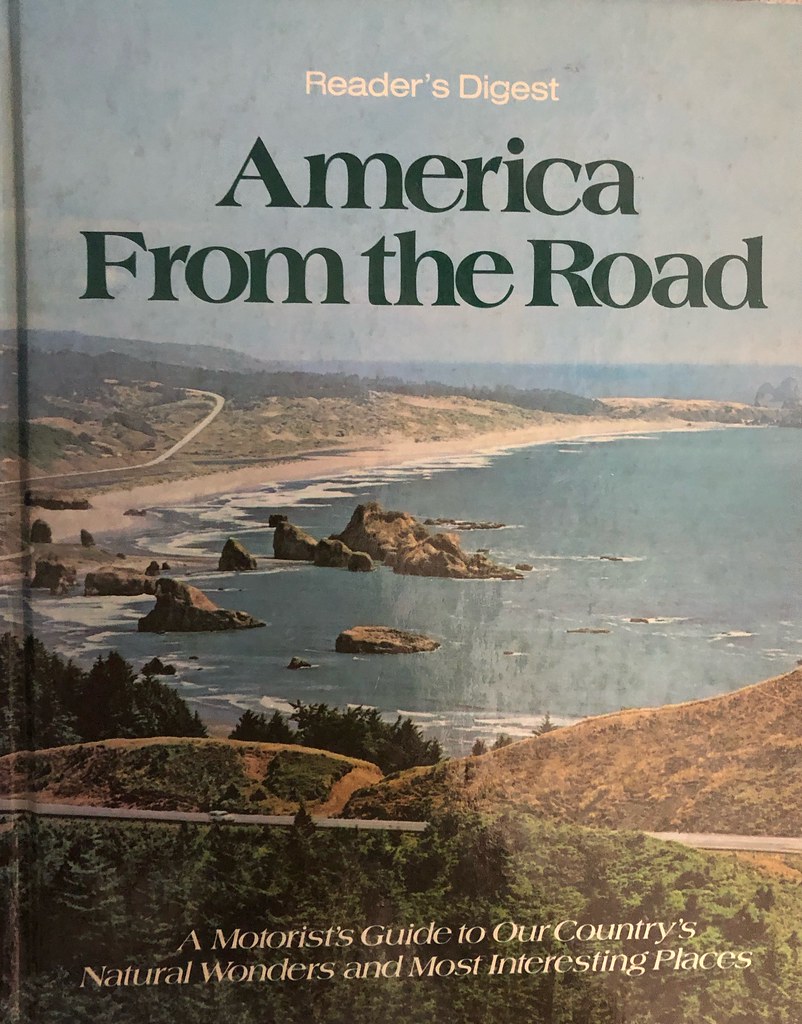Maps of the known and unknown in Daydreaming on the Porch
- June 25, 2020, 8:01 a.m.
- |
- Public
My fascination with maps goes back a very long time. In fact, I can trace the exact year — it was 1959, and we lived in a suburb of New Orleans in a small two-bedroom apartment. I was nine years old, and that year the World Book Encyclopedia came into my life. I was drawn in immediately to this amazing repository of information and pictures, articles, facts, statistics and best of all, maps.
I’ve always been interested in books and had a healthy curiosity going back to my early childhood. I remember the Golden Books series and being fascinated by the seemingly endless subjects and stories. But then that set of encyclopedias appeared, and my inquisitiveness and curiosity seemed to take off. It seemed to awaken me, and I was suddenly no longer a child. I’m not sure what age a child begins to have that awareness, but I think I was starting to because the more I read in the encyclopedia, the more curious and interested I became in learning and school.
I pored over volumes of the encyclopedia and remember being quite curious to learn about the countries of the world. I honed in on the maps to find the capitals and largest cities. I was always interested in the populations of cities, large and small, all around the world and in the U.S. Fascinating too, were the maps of rivers and ports where the major rivers met the sea. To this day the texture and color of those encyclopedia volumes are ingrained in my memory. Even when I found sets of old encyclopedias such as Compton’s and Funk and Wagnals in used bookstores years later, I’d immediately be drawn to the maps in those old encyclopedias.
Later in the 60s when I was 12 or 13, I remember for the first time getting really absorbed in road maps, as twice a year at Christmas and in the summer my parents, brother and sister, and I, would jam into our sturdy stick-shift Chevy Bel-Air, and later an Olds 88, and make the 750-mile trip from New Orleans to South Carolina with my father at the wheel barreling down the old US highways that preceded the Interstates. He’d drive straight through and we’d usually get there about 11 at night, exhausted from the long trip but so excited to see my aunt and grandparents. These trips during the 60s were a big deal for me, as I yearned to leave the big city and see the rural countryside and small towns in Alabama and Georgia on the way. I couldn’t wait to get to the first filling station, stretch and get a bottle of Coke and some Lance crackers and then get my hands on one of the free, folding Gulf or Esso road maps. Next to the counter in the gas station there was always a rack with road maps, sometimes with maps of several states, or two in one map, or a map of the Southeastern US. I liked to get the larger, single-state maps because there was so much more detail. I’d get back in the car, open up the rather large map, and start tracing our route. It was fascinating to imagine what all the little towns we passed though were like, what their populations were, and the distances between towns. This was important because once we were in Georgia and well past the halfway mark, our excitement about getting to our destination would mount, along with the level of our fidgetedyness. We passed through so many little towns, all with interesting main streets. I think I used to try to count the number of dime stores we passed. I was really drawn to those small towns, different from where I lived. I wondered what it would be like to live in such a town. In my early and mid-teens, I r didn’t like living in New Orleans that much. Thus on vacations, I would idealize small towns for their perceived old fashioned virtues and innocence compared to the big cities. Little did I know, as I later discovered. This was also before I had read Sinclair Lewis’ classic novel about small towns, “Main Street.” It was also before I served as editor several small town weekly newspapers. No map could have guided me through the mazes I found myself in.
We’d drive another 15-20 miles and come to another town, sometimes larger little cities. Those road maps were something I could always count on to occupy my time during long drives in the car. As an adult, when I actually took my own car trips around the country, maps naturally were essential in planning those wonderful travel odysseys. I was so full of anticipation and excitement about seeing places I’d never seen before. I bought books that gave detailed maps of certain parts of each state where there were interesting historical attractions, natural features in the landscape that were unusual or particularly significant, or state and national parks that were often less visited little jewels of discovery. The detailed maps in books would take me on the fabled “blue highways” that William Least Heat Moon wrote about so memorably in his first book of that title published in 1982.
According to an entry in Wikipedia, He had coined the term to refer to small, forgotten, out-of-the-way roads connecting rural America (which were drawn in blue on the old style Rand McNally road atlas).
“America From the Road” was my first and best ever go-to guide as I planned that first round-the-country trip. Each state had amazing maps of sections of the state, featuring usually circular back road mini-trips with numbered sites and places to visit along the way. I ended up taking that book’s advice almost exclusively, and it paid off. I would use those in addition to the Mobil Travel Guides which I used to find places to stay for the night. My main travel maps were in the yearly, updated Rand McNally Road Atlases, which we’re indispensable. I would buy this huge atlas every year before beginning my 6-7,000 mile road trips. They never failed me. After one of those trips, the Atlas pages would be so worn and tattered they’d practically be falling out. Many nights at motels would find me propped up on the bed going over all my books and maps. The thrill was was the adventure into the unknown. “What will I see and experience tomorrow?” “Where will those “blue highways” take me? I or quite good at reading maps.
In addition, whenever I could, I would stop at National Forest Service offices and get maps of thenational forests I would be traveling through. They had the minutest details of dirt and gravel roads, streams and rivers, and even the locations of small springs. I could pinpoint waterfalls and picnic sites. These maps were overwhelming in their abundance and richness of detail. The only maps with more detail were topographic maps. Looking closely at those Forest Service maps, either before or after I’d been diving all day, was a delightful exercise of the imagination because you knew you’d never get to see all the places in there, but just knowing they were there made it that much more fun. I would often say, “That’s a place I want to see next time.”
The only drawback to looking at Forest Service and topographic maps was that I could only dream about seeing most of those places. But they got me thinking about what endless travel like would be like in retirement if I had some sort of small Van RV. But that’s another whole realm of contemplation. I recommend the magazine “Rova” for that.
I remember in a North Carolina mountain town finding a store devoted to nothing but maps. I could hardly believe my luck. I had never seen a place like that before or since.
In addition to all these more utilitarian maps I’ve mentioned, I’m fascinated by all kinds of other maps: historical maps, Civil War maps, maps of fantasy and science fiction kingdoms, and maps of the mind (see the book of that title by Charles Hampden-Turner). It is one of my oldest books purchased more than 40 years. A book that survives that many moves is quite an influential part of my library. Another good book on historical maps is “The History of America in 100 Maps.”
Its a real shame we’re losing the ancient art of map reading to newer technologies such as GPS and Google Maps. But just like printed books are still
selling well and ebooks may never supplant them, so too will printed maps be around for some time to come. I just trust them more than listening to some robotic voice tell me when and where to turn. In a large city with its intricate maze of streets that may be a good option. But for traveling along “blue highways,” I’ll take an old-fashioned map any day.
Map of my third solo trip by car around the country, 1986-87
South Carolina highway road maps, 1959 and 2009
South Carolina Atlas and Gazeteer
Detail of a Forest Service map of the mountains of North Carolina
A portion of the South Carolina Atlas and Gazeteer showing back roads I am very familiar with
Detail of a map of Nebraska showing two recommended day-trip travel routes, one of which I will never forget. Such an amazing vast and beautiful part of the country, and relatively unknown.
Portion of the map of the fantasy land of Norman Juster’s book “The Phantom Tollbooth”
“America from the Road,” the book that started it all for me as I planned my first round the country trip. 1984
Last updated June 25, 2020













Deleted user ⋅ June 25, 2020
Hi Oswego! Remember me from OD? Sammy (lyricalheart) I prefer this over OD,
Oswego Deleted user ⋅ June 26, 2020
Welcome to PB! I’m very loyal to OD so I post my entries at both places. Love the name “lyrical heart”. Very poetic!
Deleted user Oswego ⋅ June 27, 2020
Thank you. :D
Deleted user ⋅ June 25, 2020
I like reading the dictionary/encyclopedia/map books too.
A Pedestrian Wandering ⋅ June 25, 2020
Loved everything about this entry! Maps are one of the human creations that predict what (where) will happen next. We don't travel much or very far but because I too love maps I can get us anywhere.
I took off from Los Angeles on a flight to who knows where and flying over the American West I could see landmarks from the air I knew from looking at maps. It was a wonderful experience.
One last thing about maps, We were camping in a canyon in the Mojave desert and there were a lot of petroglyphs. But one of them was clearly a map to the local springs and seeps. How crucial this information is we crave.
Oswego A Pedestrian Wandering ⋅ June 26, 2020
Thanks!
I remember clearly the a Forest Service map of A section of Wyoming which if you looked closely you could see a tiny squiggly line which was the symbol for a spring.
The petroglyph map to springs and seeps is a fascinating detail.
fjäril ⋅ June 25, 2020
looks as if your travels have skipped my home state, but given it's political and socioeconomic climate, I can't really fault you for doing so.
Oswego fjäril ⋅ June 27, 2020
Those travels were a long time ago. The country wasn’t nearly as polarized as now.
Sugar Magnolia ⋅ June 25, 2020
Maybe when all the dust settles you should buy yourself an RV and hit the road.
Oswego Sugar Magnolia ⋅ June 27, 2020
I’m started to really imagine what that would be like. Time is more precious than ever so I better not wait too long. It will have to be a small RV. They’re still very pricey. Lol
gypsy spirit ⋅ June 26, 2020
Geography was always my favourite and best subject when young, and I also love maps.....I guess wide-spread travel helps and I've done a bit of that also. Trouble is many maps and Atlases are becoming outdated as borders and names change....gets a bit confusing. American geography is one that always catches me out for some reason.....not sure why. Interesting entry....thank you. p
Oswego gypsy spirit ⋅ June 27, 2020
Oh, yes. It would have made perfect sense for me to study geography in college. I was really was very interested in all aspects of it. But I stuck with being an English major. 🙂
Kristi1971 ⋅ June 26, 2020
I started loving maps when we started learning about how the US became the US in elementary school. I still love a map. I love to know where things are - capitals to the states and countries, etc. The DeLorme Map Store and Company is in Yarmouth, ME. Maps, maps, and more maps. You can't miss it. The store is marked by a massive globe. It's awesome.
Oswego Kristi1971 ⋅ June 27, 2020
I would love to visit that store!
Deleted user ⋅ June 26, 2020
Very interesting. We have always loved maps more than the GPS system. I have still a lot of old maps, even the road atlas I used in the US. You remember I crossed the country and traveled the US 66. Lately I found that worn map full with marks and pencil notes in search for campings and motels on the way. It’s 50 years old. :)
Oswego Deleted user ⋅ June 27, 2020
So glad you saved that map! What memories it brings back!
Marg ⋅ June 26, 2020
Such an interesting entry! I remember the first set of encyclopaedias we had in the family too - I devoured them as well! I always find it fascinating watching that programme Who Do You Think You Are? when traits of ancestors are found out which explain present traits or characteristics in the current family or the person the programme is about - I wonder what your ancestors would reveal for you? These things which are ingrained and come from (seemingly) nowhere tell us a lot about ourselves. Do you still plan to travel in your retirement?
Oswego Marg ⋅ June 26, 2020
I do! I have at least ten very special places here in he U.S. that I either want to rediscover, or visit for the first time. There are so many amazingly beautiful places In this country. I have no desire to travel to other countries (and we might not even be let in). The exception would be the U.K. I want to see as many of England’s magical gardens as possible, as well as thoroughly tour the Lake District and the Cotswolds, My ancestors are from Scotland so I live o visit here and Wales. My sister and her family loved it when they visited the Cotswolds a few years ago.
In the U.S. my first favored destination would be the Hudson River Valley in New York State, the home area of my favorite artists, The Hudson River School of landscape painters. I can’t tell you how much I love their work, and I have many books of their paintings.
Marg Oswego ⋅ June 28, 2020
Sounds good - and you would absolutely love the Lake District! The only country I really want to go to is Italy - otherwise, like you, I know there are many beautiful places in Scotland I have yet to see :)
Deleted user ⋅ June 27, 2020
My Dad had a Delorme Maine road atlas when I was growing up. In fact, he still has it somewhere, probably in his car. Every time he's gotten a different car, it has traveled to the new car. The map is almost thirty years old since he's had it before I was born.
I've always loved maps as well so I really enjoyed reading this entry. I remember I'd ask my Dad to show me the route we were taking so I could follow along as we drove. He took us on countless road trips. It's still my favorite way to travel to this day. I loved all the little small towns especially, seeing the farms and little convenience stores, many towns still having buildings from a hundred, two hundred years ago, some renovated, some not. In the early 2000s Maine started having these little kiosks at rest stops that you could use to print maps of anywhere in the state. I loved those. They were free so I'd print as many as I could while waiting, we would stop for restroom breaks and water and such. Sometimes, Dad would stop at a rest stop on the interstate then go back to the back roads. He never liked driving on the interstate and I believe I got that from him.
One of my favorite rest stops is in Yarmouth, Maine where across the street from it is the Delorme Headquarters, though I think in the recent past five years it was bought out by Garmin. It houses the world's largest rotating globe named Eartha, spinning as slow as the earth itself and measuring a grand 41 feet in diameter, dwarving the previous World's Largest Rotating Globe in Boston, a still stunning 28 feet diameter and another in Italy at 33 feet in diameter. I've riden and driven past that globe for years and seeing it never gets old.
And speaking of encyclopedia's my brother and I loved those growing up. We had Britannica's and several others, complete sets usually we found for free because even by then, no one wanted them or wanted to buy them. We would read through them all the time, looking at the pictures, though the maps fascinated me the most and all the statistics. I remember in high school having to learn about countries and actually would go above and beyond researching the cultures, the populations, the history, the traditions, their clothing, their food, everything. I had to know everything. Unfortunately, I don't have any of the encyclopedia sets, my brother does, he loved them so I let him have them. I do have several dictionaries and thesauruses, two other things I loved reading and still love reading. The sad thing about encyclopedias now, they're hard to find except in second hand stores and even then, I guess most people simply don't buy them anymore so they're rarely for sale anywhere. We used to go to yard sales and book sales and so often got old books for free as well. I actually would love to turn my guest room into a library. Of course, there'd be a bed for guests but they'll have to sleep in there surrounded by books. There's not enough room in my own room for that. Naturally though, that wouldn't be the only place in my house with books. My living room is already starting to take on the quality of a library. I don't have many books just yet and I don't think I'll ever think I'll ever have enough. My parents themselves have tons of books, in their bedroom, in the living room, and not to forget, hundreds in their attic. They always talk about getting rid of some but it's been fifteen years. I don't blame them though. I can't bear to get rid of books.
Reading your entry really made me feel nostalgic about my childhood and traveling the open road, the little towns, the long stretches filled with trees, fields, mountains. I remember all the road trips with so much fondness, it's like thinking about an old friend I haven't seen in so long but love and miss very much.
Oswego Deleted user ⋅ June 27, 2020
I really enjoyed this note. It’s what I write these types of entries for. Not only for the sake of stirring my own fond memories, but to help others recall their own road trips, long and short.
You’re exactly right about encyclopedias. You can’t find old sets anywhere anymore. I remember when I got my first Mac computer. A CD-ROM encyclopedia came with it I recall, and I was so flabbergasted to see articles and photos pulled up on the computer screen. Of course it was clunky and primitive and slow, but there was a certain magic about it for this computer newbie.
Another thing. Back in the 50s and 60s grocery stores sold Funk and Wagnals and Compton encyclopedias, a a volume at a time a time. Volume 1 you got at an introductory price of $1 and the remaining volumes were $3 or something like that. I would end up getting the first volume for only a dollar, and after a couple more I think my mom didn’t want to pay the higher cost. After all, we already had a set of World Books. I could have his wrong but I know we never even fed up with a full set of those grocery store encyclopedias. They weren’t as good as World Book anyway.
Deleted user Oswego ⋅ June 28, 2020
It does make me kind of sad that it's so hard to find complete encyclopedia sets nowadays. Whenever I go to an old bookshop or a second hand store, I look, but often even if they have them they're not complete. And wow, $1 for the first volume then $3 for the rest? It does kind of add up though and I do know thirty or forty, and definitely fifty years ago, $1 was quite a bit of money. My dad, who is about 55 likes to tell me how much less things costed when he was a kid. Even though gas right now is just over $2 a gallon, I find it difficult to fathom it ever being under a dollar a gallon. I remember my dad talking about how in the 70s it was around 35 to 40 cents a gallon depending where you went. That blows my mind!
Though, now, if I saw encyclopedias for $3 a volume, oh my, I'd snap them up before anyone can say the first four letters of the word encyclopedia. I suppose in today's world, it's almost a steal. Though, I remember, probably about 15 years ago or so my mom would go to book sales, which in my opinion were way better than yard sales, just books galore, and often older books were 25 cents or 50 cents. I think usually the host just wanted to get rid of the books but it was a great opportunity to get lots of old books. I might look around and see if there are any book sales where I live but I have a feeling it's not really a thing anymore. People just throw their old books away or donate them en masse to second hand stores. Although, I know second hand stores don't sell them for much either, they're not items that move quickly. Hopefully, the pandemic will be over next year and I can go book shopping. Right now, some second hand stores are closed temporarily.
MageB ⋅ June 29, 2020
I also love AAA trip tiks and maps because they often give the history of a place too. Thanks for all these.
Oswego MageB ⋅ July 01, 2020
I could just endlessly pore over maps, especially those detailed state Gazeteers. Glad you enjoyed this entry.
Xanatos ⋅ June 29, 2020
I can never get over how beautifully you write. Please, continue to do so.
If you ever care to travel in Japan, you're welcome at my home.
Oswego Xanatos ⋅ June 29, 2020
Thank you so very much. Hearing this encourages me to write more.